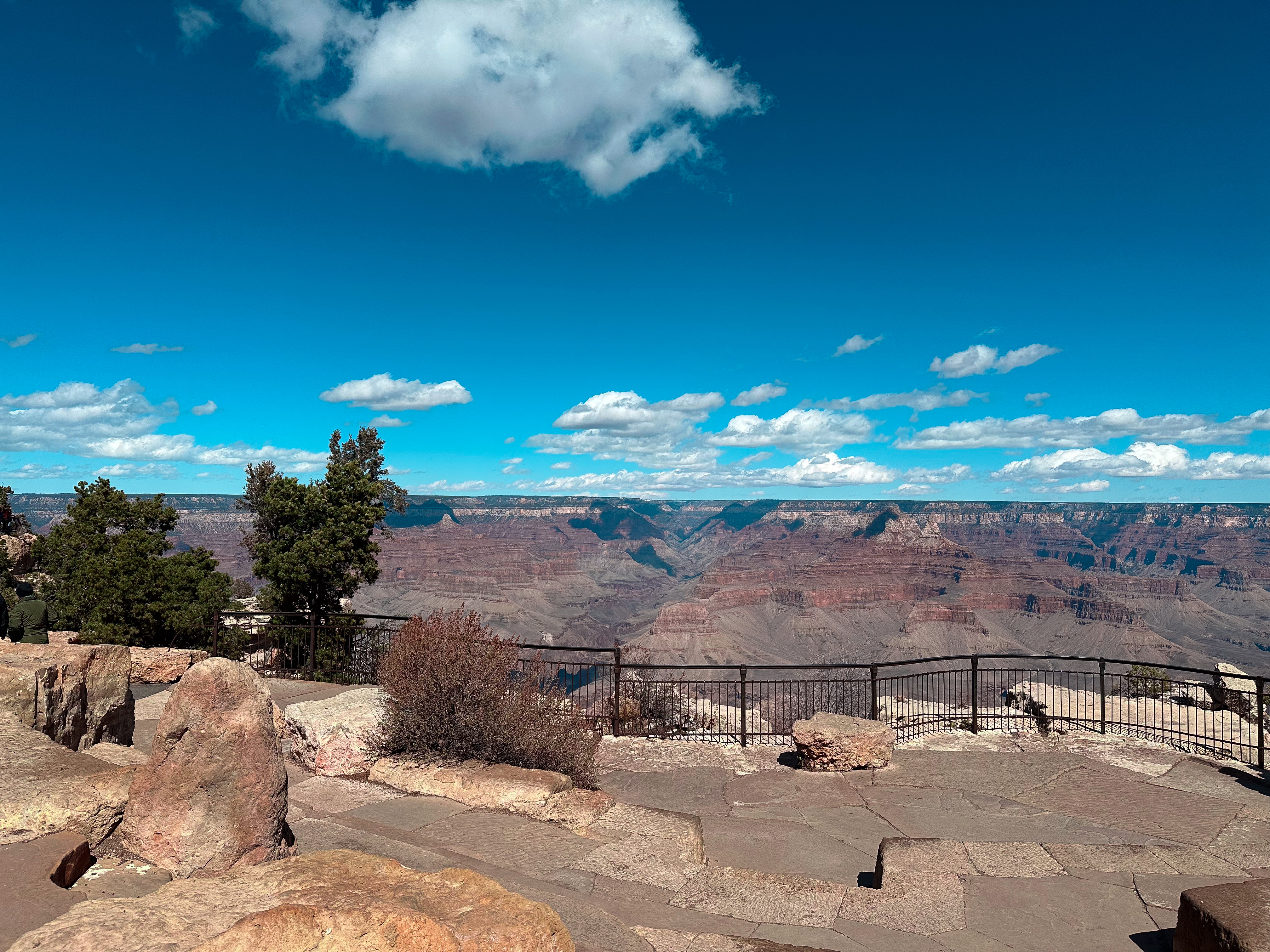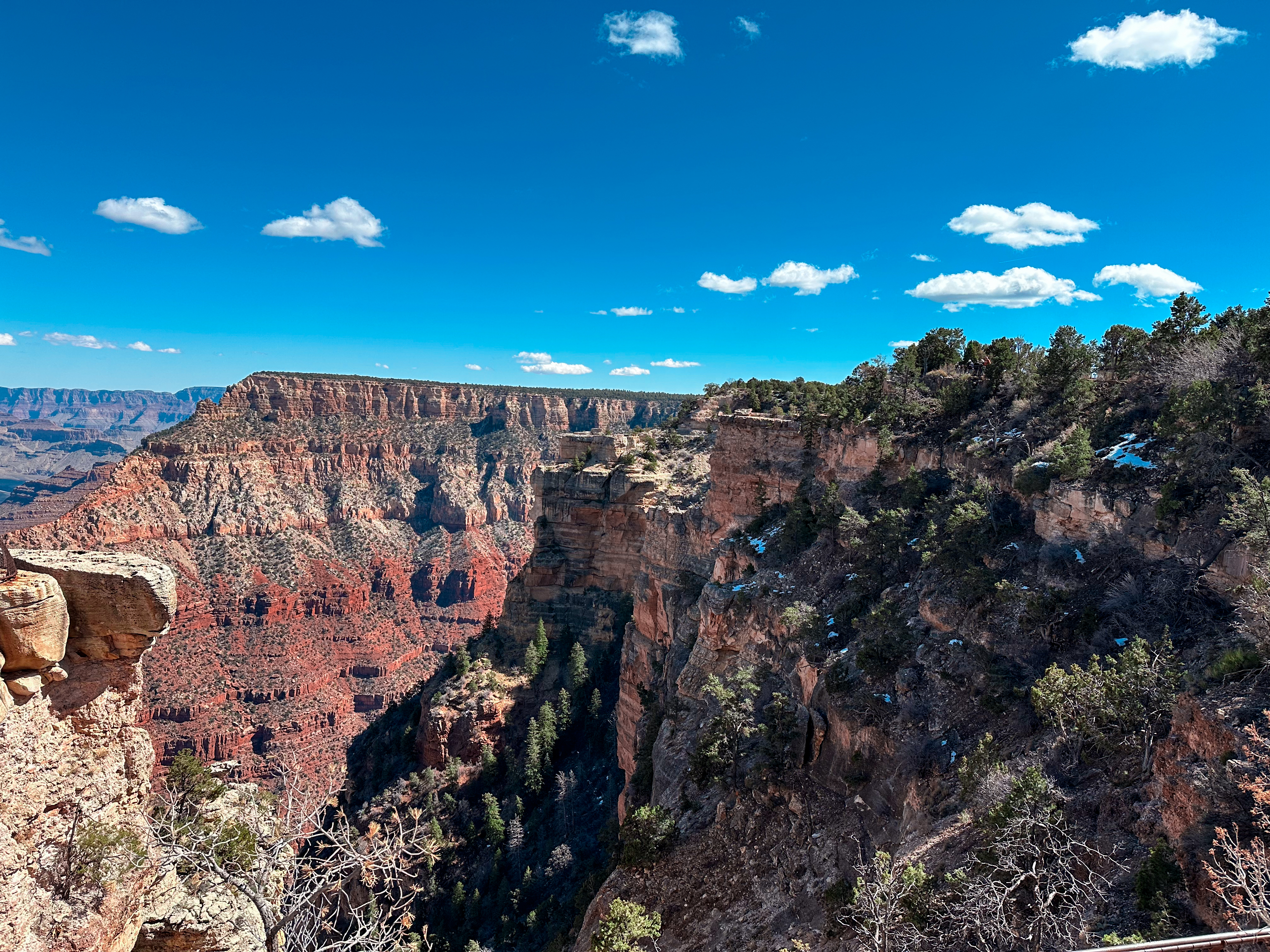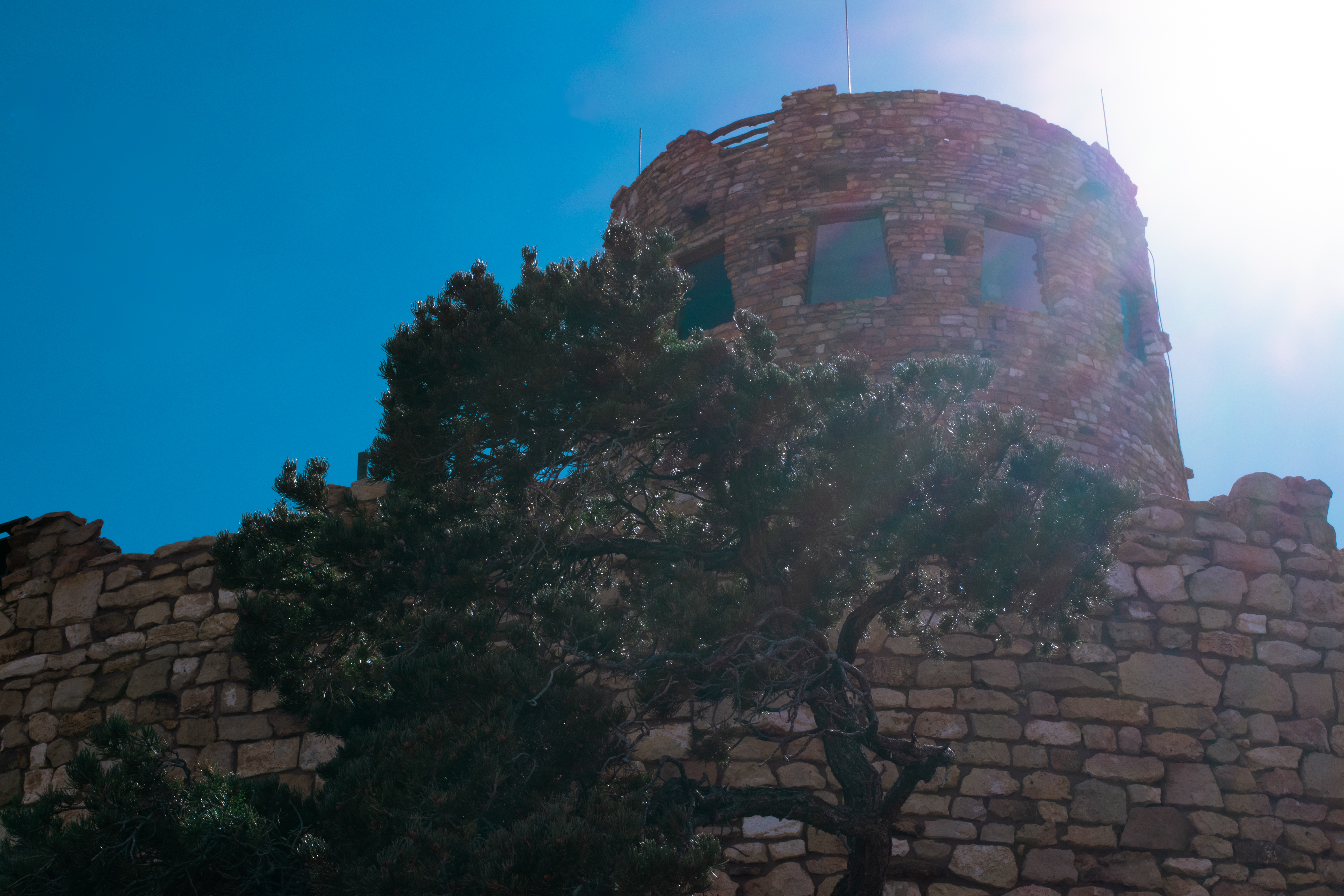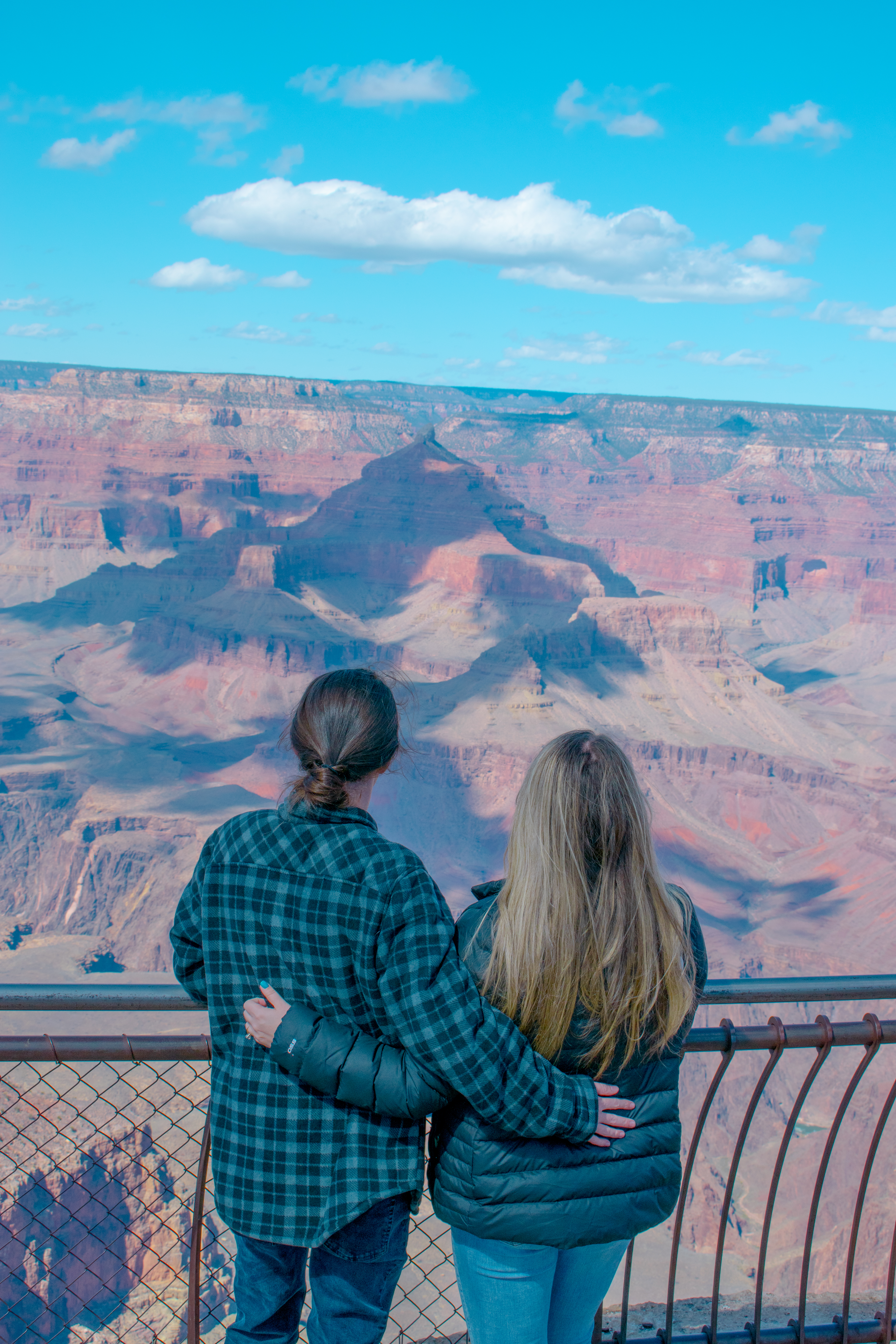Grand Canyon Viewing Points and History
March 3, 2024

The Grand Canyon's South Rim is home to some of the most breathtaking viewpoints. Mather Point, near the visitor center, offers a panoramic view of the canyon's vast expanse. The early morning light bathes the rock formations in a warm glow, creating a mesmerizing sight. Mather Point is named after Stephen Tyng Mather, who was the first director of the National Park Service. Mather played a crucial role in the development of the National Park Service and the expansion of the national park system in the United States. He was appointed as the director in 1917 and served until 1929. During his tenure, Mather advocated for the protection and preservation of natural and cultural resources in the national parks.Mather Point itself has become one of the most popular and easily accessible viewpoints at the Grand Canyon's South Rim. It offers breathtaking panoramic views of the canyon, including prominent landmarks like Bright Angel Trail, Phantom Ranch, and the Colorado River. The point is also near the Grand Canyon Visitor Center, making it a convenient first stop for many visitors to the park.The development of Mather Point and the surrounding area has been designed to accommodate the large number of visitors it receives, with ample parking, viewing platforms, and safety railings. The point is a testament to Stephen Mather's vision of making America's natural wonders accessible to the public while preserving their beauty for future generations.

Yavapai Point, another favorite, provides a clear view of the Colorado River winding through the canyon. The geological museum nearby offers insights into the canyon's formation, enhancing the experience.Yavapai Point is one of the most popular and easily accessible viewpoints on the South Rim of the Grand Canyon. It offers expansive views of the canyon, including sights of the Colorado River, Bright Angel Canyon, and Phantom Ranch.The point is named after the Yavapai people, a Native American tribe whose traditional lands include areas of what is now central and western Arizona, including regions near the Grand Canyon. The Yavapai have a deep connection to the land and a rich cultural history that predates the establishment of the national park.One of the key features of Yavapai Point is the Yavapai Geology Museum, which was originally known as Yavapai Observation Station. The museum was built in the 1920s and provides visitors with educational exhibits about the geological history of the Grand Canyon. It offers an excellent vantage point for viewing and understanding the canyon's complex rock formations and layers, which represent millions of years of Earth's history.Over the years, Yavapai Point has become a must-visit location for tourists seeking to experience the grandeur of the Grand Canyon. It is not only a place to enjoy stunning vistas but also an educational site where visitors can learn about the natural processes that shaped this iconic landscape.

The Grand Canyon is home to many spectacular viewing points, but one of the most iconic is the Desert View Watchtower. Perched at the eastern edge of the Grand Canyon National Park, the tower stands as a sentinel overlooking the expansive canyon. Designed by architect Mary Colter and completed in 1932, the Desert View Watchtower is an impressive 70-foot high stone building that mimics the architecture of ancient Puebloan peoples. Colter’s design was not only inspired by the ancestral Puebloans of the Colorado Plateau, but she also incorporated actual Native American motifs and artwork inside the tower, creating a space that pays homage to the indigenous cultures of the region. The tower offers one of the finest vantage points for viewing the canyon and the Colorado River, providing visitors with breathtaking panoramic views. It also serves as a cultural and historical exhibit, enhancing visitors' understanding of the area's heritage and the significance of preserving such landmarks.
Hopi Point, along Hermit Road, is renowned for its sunset views. The way the setting sun paints the sky in hues of orange and pink is truly a sight to behold. Hopi Point is one of the most prominent viewpoints along the South Rim of the Grand Canyon. It is part of the Hermit Road, a scenic route that offers some of the most spectacular views of the canyon.The point is named after the Hopi tribe, one of the Native American tribes that have deep historical and cultural ties to the Grand Canyon region. The Hopi people have a long history of living in the southwestern United States, and their ancestral lands include areas near the canyon. The Hopi have a rich cultural heritage and a strong connection to the natural world, which is reflected in their art, traditions, and spiritual beliefs. Hopi Point is particularly famous for its breathtaking sunset views. The point extends out into the canyon, providing an unobstructed view of the vast expanse and allowing visitors to see the play of light and shadow across the canyon walls as the sun sets. It is also an excellent spot for viewing the Colorado River and various rock formations, including the Vishnu Schist and the Great Unconformity. Over the years, Hopi Point has become a favorite destination for photographers and nature enthusiasts who seek to capture the beauty of the Grand Canyon during the golden hours of the day. The point's significance is not only in its natural beauty but also in its connection to the Hopi culture and the broader history of the indigenous peoples of the region.

As our exploration of the Grand Canyon's viewing points comes to a close, it's clear that each vantage offers its own unique perspective on this natural wonder. From the historical depth and cultural richness of the Desert View Watchtower to the awe-inspiring sunsets at Hopi Point, these viewing points provide more than just photo opportunities—they offer a chance to connect with the profound beauty and vastness of the canyon. Whether you seek solitude at the lesser-known Yavapai Point or the bustling energy of Mather Point, the Grand Canyon's panoramas invite all who visit to pause, reflect, and appreciate the incredible forces of nature that have shaped not only the landscape but also the human spirit. So, pack your camera, but also bring a sense of wonder and readiness to be moved by one of the world’s most breathtaking sights.
< BACK